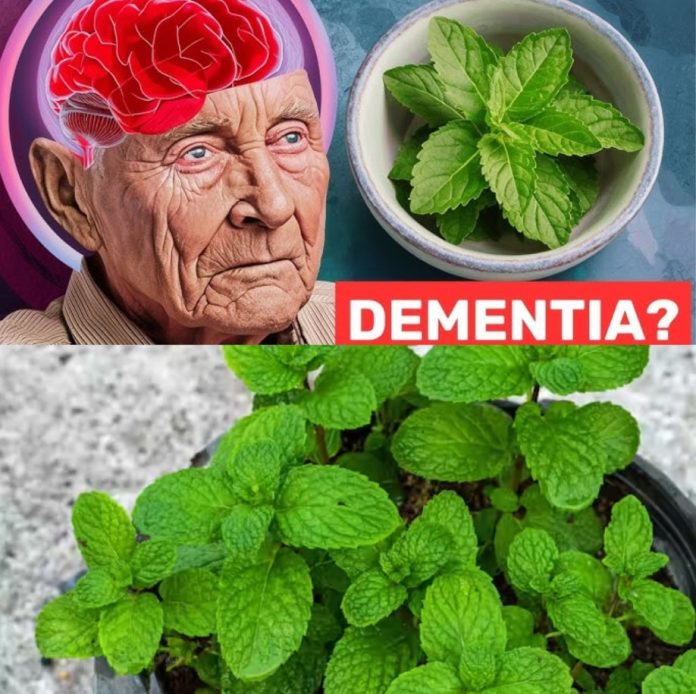In an age where people are turning to natural solutions for health preservation, mint stands out as a plant that not only refreshes but also provides an incredible array of health benefits. From its cooling aroma to its cognitive-enhancing properties, mint is more than just a garnish for your dishes or a flavor in your gum.
Emerging research now highlights mint as a potential ally in preventing cognitive decline, including conditions like dementia. With its rich history in both culinary and medicinal practices, incorporating a spoonful of mint into your daily routine could be the key to a sharper, more resilient mind.
Historical Use of Mint
Mint has been cherished across civilizations for its healing properties. Ancient Egyptians, Greeks, and Romans used it for various purposes, from digestive aids to headache relievers. Throughout history, mint has maintained its reputation for boosting overall wellness. What sets mint apart today is its ability to impact cognitive health, especially when it comes to dementia prevention. The power of this humble herb is becoming clearer with modern scientific studies supporting its traditional uses.
The Science Behind Mint’s Benefits
The primary reason mint is believed to protect brain health lies in its active compounds, particularly rosmarinic acid, menthol, and flavonoids. Rosmarinic acid is a potent antioxidant that combats oxidative stress, a key contributor to neurodegenerative conditions such as Alzheimer’s disease. Oxidative stress leads to the formation of free radicals that damage cells, including neurons in the brain. By incorporating mint into your daily regimen, you’re delivering a natural shield to protect against these damaging effects.
Menthol, the cooling agent in mint, doesn’t just freshen your breath. Studies have shown that menthol may have neurostimulatory effects, promoting a calming sensation while also enhancing focus. This dual action of relaxation and mental clarity makes mint a versatile herb for both immediate cognitive function and long-term brain health.
Mint and Alzheimer’s Disease
Alzheimer’s disease is a progressive condition that results in the decline of memory and cognitive abilities, often caused by the buildup of plaques in the brain. One of the lesser-known benefits of mint is its ability to interfere with these plaque formations. The rosmarinic acid in mint has been linked to the reduction of amyloid-beta plaques, the proteins responsible for Alzheimer’s-related damage. In essence, adding mint to your daily diet may slow the progression of plaque formation, protecting your neurons and maintaining cognitive vitality.
How to Incorporate Mint Into Your Daily Diet
Incorporating mint into your diet is easy, and the benefits are immense. Whether through fresh leaves, dried mint, or mint oil, you can enjoy mint in a variety of forms.
- Fresh Mint Leaves in Smoothies: Add a spoonful of mint leaves to your morning smoothie. Its refreshing taste pairs well with fruits like pineapple, berries, and watermelon, which also have cognitive-boosting properties.
- Mint-Infused Water: For a refreshing and health-boosting drink, drop a few fresh mint leaves into your water bottle. Sip on this mint-infused water throughout the day to get a gentle dose of antioxidants and hydration.
- Mint in Salads: Fresh mint leaves can be chopped and added to salads. Combining them with cucumber, feta, or watermelon provides a sweet and savory balance, while also supplying your brain with vital nutrients.
- Mint Tea: Mint tea is one of the most effective and soothing ways to enjoy the benefits of mint. Simply steep a spoonful of fresh or dried mint leaves in hot water. Not only does it soothe the digestive system, but it also delivers a dose of cognitive-enhancing antioxidants.
- Mint Extract in Baked Goods: Mint extract can easily be incorporated into your baking routine. Add a few drops to cookies, brownies, or cakes for a burst of flavor along with health benefits.
Mint for Immediate Cognitive Boosts
Aside from its long-term benefits, mint can also provide an immediate mental boost. Have you ever noticed how chewing mint gum can help you feel more alert? That’s because mint’s aroma stimulates the brain’s central nervous system. Inhaling the scent of mint alone can increase concentration and focus. A quick sniff of peppermint oil can be enough to wake you up during a mid-afternoon slump, making mint an ideal herb for students, professionals, and anyone needing a quick mental pick-me-up.
Fighting Cognitive Decline with Natural Remedies
As people age, they often experience slower cognitive function. Mint offers a natural way to slow this process. The anti-inflammatory properties of mint are especially significant when it comes to cognitive health. Chronic inflammation in the brain can lead to neurodegenerative diseases, and mint’s anti-inflammatory compounds help reduce this risk. By calming inflammation, mint not only protects your brain but also improves overall bodily health.
Mint vs. Pharmaceuticals
While many modern medications promise cognitive improvement or dementia prevention, they often come with a long list of side effects. Mint, on the other hand, is a safe, natural alternative. Its gentle yet effective impact on cognitive health offers a holistic approach. Moreover, using mint regularly doesn’t carry the risks associated with pharmaceuticals, and it can easily be incorporated into daily meals and snacks.
Conclusion :
From freshening breath to enhancing brain health, mint truly lives up to its status as a miracle plant. Just one spoonful of this potent herb a day could offer a natural defense against cognitive decline, boosting memory and preventing the onset of dementia-related diseases like Alzheimer’s. As we seek safer, more natural remedies in a world dominated by synthetic pharmaceuticals, mint offers a solution that is both refreshing and effective.
Start incorporating this herb into your routine today, and experience the cognitive benefits that have stood the test of time.
Source of the picture : Barbara O’Neill










